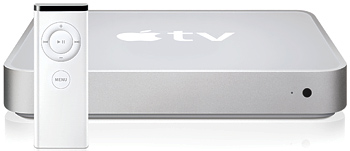Whither Television Broadcasting?

We interrupt the series that has been running in this column on "ultra resolution," to bring you a message about what's going on in television today.
First, a bit of good news. The Council for Research Excellence recently completed a yearlong study described as "…a cross-industry think tank of top executives from agencies and TV networks…," which revealed some interesting trends.
LIVE TELEVISION RULES
The purpose of this study, entitled the "Video Consumer Mapping Study," was to determine where and how people seek out video. It indicates that "…the extent to which young people are abandoning live television for new media has been overestimated." The study's results showed that people between the ages of 18 and 24 watched only 5.5 minutes of computer video per day, versus 209.9 minutes of live television. DVR playback amounted to 17.2 minutes per day. Over all age groups studied, the numbers were live television, 309.1 minutes; DVR playback, 14.6 minutes; online video, 2.4 minutes.
This appears to give the lie to the commonly-expressed belief that young people are abandoning live TV in droves for video from the Internet and cell phones. 209.9 minutes is nearly three and a half hours, and the numbers for online video, and even DVR playback video, are trifling by comparison. Maybe all that electric power used to run broadcast transmitters doesn't represent wasted money after all.
Two other indications are of interest as well. One is that watchers are actually exposed to 72 minutes of commercials and promos per day. Another is that digital media has in fact replaced radio as the second most popular medium behind television.
There is a negative trend, here, in that younger viewers appear to be watching some 30 percent less television than all surveyed ages taken together. I will leave to the reader the question of whether, over all ages surveyed, the average person watching more than five hours of television a day is an encouraging or disturbing fact.
CABLECASTERS REGRET
Secondly, according to a recent article in The New York Times, cablecasters are beginning to regret the proliferation of free online viewing of television programs. Time Warner Cable, for example, is testing a "subscriber model" for online TV viewing in Milwaukee. Residents who subscribe to HBO there can watch certain HBO programs online, using a special software and login. Those who are not HBO subscribers cannot use this service.
Full-length TV shows on the Web have significant appeal, although, if we accept the study report cited previously, maybe not so much appeal as we have been led to believe. The free video Web site Hulu, to cite one specific example, attracts a very small fraction of the hundreds of millions of viewers who watch live TV, but Hulu did report a 42 percent increase in viewership for February 2009 over January 2009. According to Nielsen, the ratings for some programs would increase by as much as 25 percent if online viewing was included.
Cable and satellite executives are feeling like their subscription levels are becoming threatened by free online viewing and low-cost iTunes viewing. They are exploring a subscribers-only approach. This requires some new technology, to enable cable companies to recognize their subscribers online. This was a hot topic at the recent cable trade show in Washington.
The NYT also reports that there are signs that broadcast and cable networks are concerned that their early, highly-promoted push to put their programs online might be threatening the revenues they reap when the shows run on regular television. Almost every show from the broadcast networks is currently available free online, but almost every cable show isn't. This model may be changing somewhat, though, because advertisers aren't willing to pay the kind of money for advertising in shows viewed online that they pay for advertising on regular television. It's all about CPMs (cost per thousand), of course. Additionally, offering so much free programming online is, according to one industry insider, beginning to jeopardize the lucrative retransmission relationships the broadcast networks have with cable and satellite providers.
ANOTHER VIEW

The Apple TV set-top box is one product that bridges the computer-to-television gap.
Yet another trend that disturbs television networks and distributors is the prospect that online video will be increasingly viewed on the actual television screen. Products to bridge the computer-to-television gap include the Apple TV set-top box and the Roku digital video player, and there are other startup companies like Boxee, which can bring video from sites like Hulu to the TV screen. Recently, Hulu's backers, NBC and Fox, put pressure on Hulu to remove its content from Boxee, as it was threatening their retransmission fee negotiations with cable operators.
Finally, every so often for the past couple of decades, a broadcast network executive raises the specter of the network bypassing its affiliate stations and putting its programming directly on cable and satellite. A recent instance of this concerned the CEO of CBS, Les Moonves, who raised this prospect last December. One argument proffered by the networks is that what they lose in ratings by so doing, they will more than make up in license fees from operators. Randy Bongarten, CEO of Bonten Media Group, which owns network affiliates in eight markets, said at a recent panel discussion that he feels that this would be senseless. He points out the ratings for a given network can vary by 50 percent between a strong affiliate and a weak one. He also asked why the networks would give up the "free" (his word) distribution system they now have to deal with operators that they "never particularly got along with."
And so it goes. Some who read this will remember those simpler days of yesteryear when television was essentially a three-part monopoly, and a major market TV station effectively amounted to a license to print money. Things have gotten increasingly complex since those days, both in terms of business and very much in terms of technology. Although it has been an industry roiling with change for decades now, television broadcasting has never been under siege to the extent that it is today. What will tomorrow bring? Who can tell? It is far easier to predict the past than it is to predict the future. As the old cliché has it, "stay tuned."
Randy Hoffner, a veteran of the big three TV networks, is a senior consulting engineer with AZCAR. He can be reached through TV Technology.
Get the TV Tech Newsletter
The professional video industry's #1 source for news, trends and product and tech information. Sign up below.

